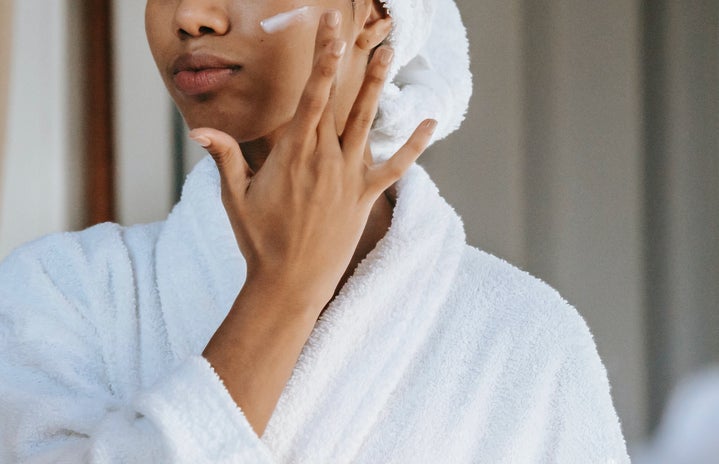You may have noticed the “clean girl” trend taking TikTok by storm in recent months; it’s a variation of “that girl” who exudes wellness and productivity. The clean look involves a minimal makeup look complete with fluffy brows, dewy skin, and glossed lips coupled with slicked-back hair and dainty gold jewelry.
The trend came about when TikTok influencer Eva Rankin (@evarankiin) uploaded a tutorial describing how to achieve the clean look as a response to a comment saying that she “looks so clean.” Shortly after Rankin uploaded her video, TikTok users rushed to create their own spinoff of the trend. Online publications like Elle, InStyle, and Paper Magazine raced to create itemized lists of products to buy to achieve the clean look.
The “clean girl” look isn’t anything new. It’s synonymous with the “model-off-duty” look of the ‘90s and ‘00s – appearing effortless and expensive, like Hailey Bieber or Kendall Jenner. It can also be compared to the more recent “no-makeup” makeup look, where you strategically place makeup products so it looks as though you aren’t wearing any.
Just a quick scroll under the hashtag #CleanGirl will reveal predominantly white women with symmetrical faces, perfect skin and slicked-back hair. Herein lies the issue. There’s only one specific type of girl that the “clean girl” aesthetic is designed for: skinny, wealthy and white. It suggests that because the clean girl is aspirational, wealth and whiteness is aspirational as well. The trend is a product of classism and racism which is ironic, considering Gen-Z’s mantra has been to push against these ideals and to celebrate diversity and body positivity.
We’ve created this unrealistic expectation of women to have it all, i.e., the time, money, energy and opportunity to look perfectly put together, which just isn’t attainable for most women. The “clean girl” is just another ploy to fetishize these unattainable standards of beauty that have been pushed on young women for decades.
The new “clean girl” aesthetic is even more harmful than the heavy glam culture of 2016. The makeup of 2016 was moreso about expressing creativity and art through makeup, which was great. But the whole clean girl trend is based on how you look naturally, so if you don’t have perfect skin or hair that can be slicked back, you can’t achieve the perfect clean look. And that doesn’t mean you look “dirty,” but that’s what you’re led to believe.
Instead of subscribing to the clean look, embrace what makes you feel like YOU. If that means full coverage foundation, a bold lip and curly hair, do it! If it means no makeup, a messy bun and your favorite sweats, do it! The point is, the clean look won’t transform you into someone who isn’t you, and that’s a good thing! It’s time to celebrate your beauty, your individuality and to ditch the toxic TikTok trends.


